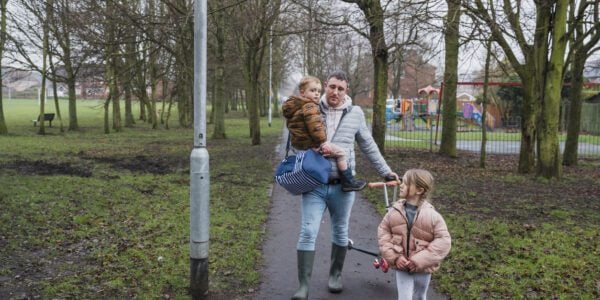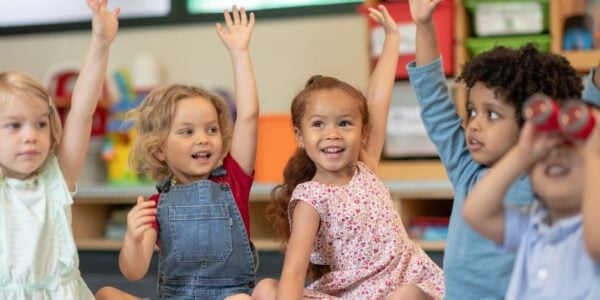
30/09/15
4 min read
Less than a quarter (22%) of children on free school meals in inner London obtained five or more A*–C grades at GCSE or their equivalent (including English and Maths) in 2002.
In 2013, this had risen to almost half (48%). Gains were much smaller among disadvantaged children outside London (17%) to (26%).
New work, published today by CASE at the LSE as part of the Social Policy in a Cold Climate project concludes that the improved performance largely reflects gradual improvements in school quality over time. Improvements in primary schools played a major role in explaining later improvements in secondary schools. The work was funded by the Nuffield Foundation, The Joseph Rowntree Foundation and Trust for London.
The new work establishes that the “London effect” for poor children began in the mid-1990s – well-before many of the high-profile policies in secondary schools previously credited with London’s success, such as the London Challenge, Teach First, and the growth of academies.
It’s possible that recent changes reflect London’s status as an economic powerhouse. To check this the researchers follow a group of children born around the year 2000 from preschool to age 11. This shows that disadvantaged pupils in London are not ahead at age 5, but instead make faster progress once they get to school compared to their peers outside the capital.
Jo Blanden of the University of Surrey said: “London’s schools have become extremely good at helping poor children succeed. This is despite the incredible diversity of their pupils. This success is likely to lead to better jobs and more social mobility among those educated in the capital.”
Luke Sibieta of the Institute for Fiscal Studies said: “London schools have become synonymous with educational success, particularly for poorer children. Our research shows that these improvements are not down to a single policy or factor. Instead, most of the improvements reflect gradual increases in the quality of schools stretching back to the mid-1990s. London’s primary schools have become particularly successful and London’s great secondary schools can then build on this success.”
- The researchers from the IFS, University of Surrey, University of Bath and the UCL Institute for Education used information from the National Pupil Database, which records the school outcomes of all children in England. They found that: London is much more ethnically diverse than the rest of England and ethnic minorities tend to obtain better GCSE results than children from white-British backgrounds. This explains a lot of the higher performance of poorer children in London compared with those outside London but it does not explain why disadvantaged Londoners have improved their performance so much. (It explains about one sixth of the improvement relative to the rest of the country).
- The main explanation for better GCSE results is that pupils from poorer backgrounds are entering secondary school with better test scores at age 11. In 1997, about 47% of poorer pupils in both inner London and the rest of England achieved the expected level in English tests at age 11. By 2008, poorer pupils in inner London became 7 percentage points more likely to achieve this standard (75% for inner London compared with 68% for the rest of England). This points to a very important role for improved performance by primary schools in London. This is then built on in London’s secondary schools so that children leave with strong GCSE results compared to other poor children outside of London.
- In addition it seems that having lots of peers from deprived backgrounds is no longer holding children back as much.
The researchers supplemented their analysis of administrative data by using the Millennium Cohort Study to look at the performance of one large group of children born around 2000 and for whom there is detailed data on their progress before age 11.
- In this cohort of around 19,000 children, who all started school at age 5 in 2005, disadvantaged children in London were not ahead of those outside London at the point when they started school. Indeed, they were less school-ready on some measures, but this is mainly because of their more diverse ethnic background and because many do not speak English as a first language. They had more than overcome this starting disadvantage by age 11.
- Differences in the family background and characteristics of poorer pupils in London explain just under half of the London advantage at age 11 (mostly due to higher levels of ethnic diversity). However, most of the advantage remains unexplained, again pointing to the important role played by London’s primary schools.
ENDS
1. In the National Pupil Database, the researchers use receipt of free school meals to indicate children from disadvantaged backgrounds. 35-40% of pupils at age 16 in Inner London receive free school meals while it’s 14% of pupils across the whole of England. Eligibility for free school meals depends on receipt of means tested benefits.
2. Children were considered poor in the Millennium Cohort Study if their household was in receipt of Job Seekers Allowance or Income Support when the age 3, 5, 7 or 11 survey was taken.
3. Disadvantaged children in London are different from their peers outside London, particularly in terms of ethnicity. However, all the children we consider are on means-tested benefits and this tends to lead to similar living standards across the country.
Related


















































